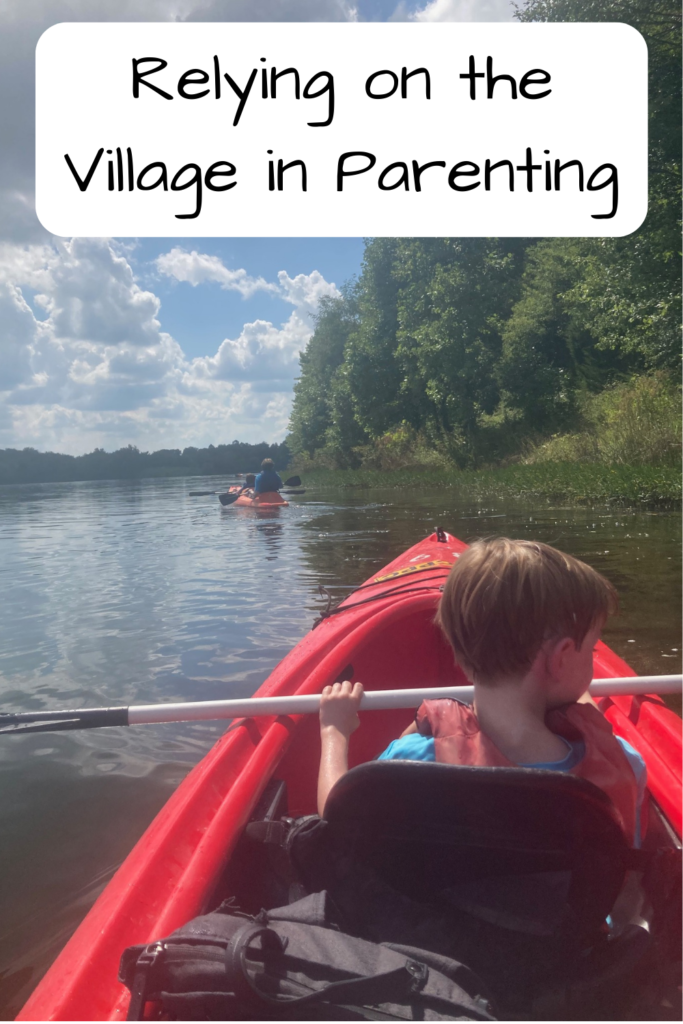
I opened and closed my mouth trying not to say anything to my younger son. Finally, I just had to. “No, not like that!” I cried, as our kayak started moving backwards. I sighed and thought, “I thought he knew how to do this?!”
My younger son was sitting in front of me in a red double kayak. I was attempting to leave shore. He dipped one side of his paddle in the water, then dipped it on the same side again, and then dragged it backwards on the surface.
“Take your paddle out!” I yelled. I struggled to figure out how to explain the sixteen different things he needed to fix, all at the same time. I tried to start with something concrete.
“Ah, ah, your hands, your hands need to be spaced the same amount apart. Can you spread them out?” I stammered as I paddled, trying to keep us from running into another boat or going backwards. As he fixed his hands, I replied, “Yes, like that.” Then thought, “Or not,” as his hands shifted exactly back to where they were before. And then his paddle was going backwards again. “Ack, no, stop paddling!”
My husband, Chris, spotted our flailing. My older son was in his kayak and while his form wasn’t perfect, he had done it before and was remembering the rhythm. My husband was in a good place to provide a metaphorical hand.
“Try to have your paddle be the same length on both sides,” he pointed out to my younger son.
“I told him that already!” I spat out. Hearing my tone, I realized that I didn’t want to speak like that. Not now – or ever. I closed my mouth and trusted my husband to explain it.
With the patience I was lacking, Chris was able to walk my son through the steps of paddling a kayak. He demonstrated it himself, then broke it down logically. Without being able to touch him or the paddle, my husband walked my younger son through the whole process.
As we started out post-instruction, my son’s hands were still a bit lopsided and he stroked on the same side multiple times in a row. But he had a good enough grasp on the skills to do it a little bit. Enough for me to be able to follow him. Enough for me to be patient and explain what was going on when things did go sideways. Enough for us to move forward – metaphorically and literally.
That’s the power of working together to raise a kid. Sometimes you aren’t going to be able to do it all. Sometimes the best thing you can do is allow someone else to step in and take over. In my case, that’s often my husband. But it isn’t for everyone – sometimes it’s a grandparent or friend or aunt or uncle.
Another person stepping in doesn’t mean that you’re incompetent or a bad parent or anything. It just means in that moment, they’re better equipped to take on that role. Often, that little break or switch also means that you have a chance to reset your own perspective. It gives you a chance to breathe and see what comes next rather than panicking.
The saying goes that “it takes a village.” While that’s true, often it’s not a group of people at one time. It’s a single person at a specific time. We can accept that help when needed and also be that person for each other when we’re needed.